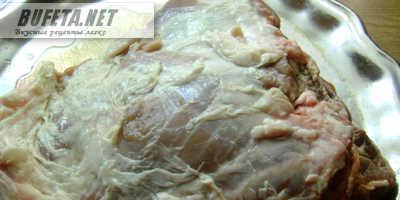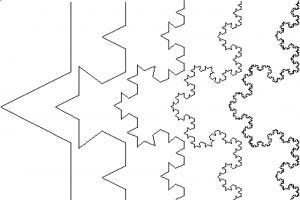Good and high-quality repairs bathroom will save you for at least 10 years from thoughts about paint, remodeling, etc. And if you choose the right material, then this period can be extended by several years. But, it is very important not just to buy the material and install it as it turns out, but to make the repair look incredible. The bathroom renovation construction company MasterSanuzlov will help you with this. Our specialists quite successfully carry out repairs, introducing into their work all the new products of the construction market. All you have to do is call, and we will immediately come with a lot of ideas that you will definitely like.
IN Lately We advise many people to decorate their bathroom with mosaics. It looks luxurious, and besides this, such repairs will serve you for decades. A bathroom is a room where there is constant moisture and not everyone construction material will do. And if the bathroom is also combined with a toilet, then this requires constant dry cleaning. Many surfaces simply cannot withstand the influence of these substances and become unusable. This means that the material for such a room must be resistant to chemicals, but at the same time easy to care for. It is precisely these criteria that a mosaic fits.
It has quite a lot of advantages. Among them: strength, resistance to fading, moisture resistant. The most interesting thing is that the variety of colors and styles allows you to create different designs. This is one of the differences between mosaic and ceramic tiles. After all, everyone knows that mosaics have been a material for art since ancient times. And the fact that it is a durable material is proven by those frescoes that have reached our times completely undamaged.
An important fact is that it can be attached to any surface: concrete, plaster, wood, and even metal.
If your bathroom has an unusual layout, there may be a lot of curves or some special surfaces. Then our specialists will be able to further emphasize the peculiarity of this room. And for this they will need a mosaic. This will help create a harmonious image that will surprise everyone.
But, it is not necessary to cover the entire room with mosaic tiles. Only a few elements can be highlighted. If you separate the toilet area from the sink with a counter made of this tile, this will visually increase the height of the ceilings. In separate fragments You can revive the interior, give it some lightness.
Using this material you can add originality to your bathroom. By covering baseboards, ledges and other various structures, you will end up with a bathroom that no one else has.
You need to select decor by color. So that the mosaic harmonizes with the ceramic tiles on the floor, or with the appliances that will be present there. Great solution there will be a combination of mosaic and tile. This perfect solution to combine a bathroom with a shower.
The bathroom renovation company “Master Sanuzlov” will complete the task assigned to them with dignity. We promise you will be satisfied with the work done.
High-quality finishing of a bathroom with mosaics means many years without repairs, renovations and other problems. The right material means strength, beauty and long, impeccable service life. But it is important not only to buy the right product, but also to adequately decorate the wall, select interior items and lay out the floors. It's no secret that mosaics look perfect when decorating a bathroom. But not everything is as simple as we would like, so it’s worth familiarizing yourself with some rules for preparing the room, as well as technology, so that laying mosaics in the bathroom does not turn out to be burdensome in terms of time and financial costs.
We prepare the premises, purchase materials
Mosaic in the bathroom with your own hands is possible, but all surfaces for this material must be prepared extremely carefully, otherwise the installation will develop into subsequent repairs. The walls and floor must be leveled to perfect condition. The floor screed should dry and hide all defects. It is best to allocate at least 7-10 days for preparation. On a flat surface, you can start laying out the mosaic without the slightest problem, the main thing is to determine the shape, color schemes and texture of the material. When all goods have been purchased in the required volume, it is important to select the adhesive base.
If you plan to decorate the bathroom with mosaics on all surfaces, then it makes sense to purchase glue in larger quantities. But in any case, the volume of the composition depends on the quality of the mosaic, the total area, the quality of the adhesive itself and the evenness of the surfaces. Covering a bathtub with mosaics, like any other renovation, requires a thoughtful and unhurried approach, determining your capabilities and skills.
Laying the material

Of course, tiling a bathtub with mosaics is quite a complicated matter. And if you lack skills, it is better to turn to specialists, but you can try your hand. The cost savings are huge, and self-installation will allow you to take on complete renovation apartments without the slightest doubt. How to install a mosaic in the bathroom:
- Accurately calculate the start of installation. If the material is selected with a certain pattern, it is important to preview all the possibilities (rotation, joining of elements, center of the picture). You can first lay out the finishing on the floor to estimate the beginning and, gradually removing parts, transfer them to the bathroom wall.
- After this you need to dilute adhesive composition and apply it to the surface(floor, wall, washbasin splashback, ceiling) and lay mosaic elements. In order not to wonder: how to glue a mosaic in a bathroom on the ceiling, wall or floor and understand the order, it is worth watching the video posted just below.
- The layer of adhesive base should not exceed 10 mm, At the same time, the installation technology and sequence of actions must be strictly followed.
Tools for work

Tools for cladding work
Finishing a bathroom with mosaic tiles is impossible without the following tools:
- a notched spatula (comb) will place the adhesive layer evenly and over the entire surface,
- a sharp special construction knife will help cut the canvas,
- metal tongs will allow, if necessary, to split the element into parts of the desired format,
- marking pencil, tape measure, level - tools that are necessary if tiling a bathroom with mosaics is done with your own hands.
It's best to stock up on all the accessories in advance so you don't have to look for them when necessary. The mosaic covering of the bathroom is not finished yet seams worn out. It is worth knowing that the distance between the entire matrix of material should not be less or greater than the butt seams. And for leveling, mosaic grout is useful; it is sold in specialized departments of stores.
Grouting joints

It’s clear how to lay a mosaic in a bathroom, but the seams need to be sealed only after the adhesive has completely dried, so that all the elements “sit” tightly and do not move when final processing. Otherwise, you will get a jumble of matrices, and you will have to redo everything. To avoid deforming the surface and scratching elements, grout should be applied with soft rubber tools.
For home use grout on cement is suitable, epoxy resin or specifically recommended by the manufacturer. It’s worth looking through all the material options before you start renovating your bathroom with mosaics.
Mosaic finishing: more options

If the canvas is self-adhesive, then the question of how to lay out a mosaic in the bathroom is even easier to solve. After complete preparation of the surface, the canvas is separated from protective film and applied in a piece or segments to the surface. The main thing is the correct marking and placement of the pattern. By the way, this finishing can be used both as a full canvas and as fragments. For example, a multi-colored eclectic painting, divided into pieces, will designate certain zones. The convenience of the material lies in the fact that you do not need to look for an adhesive composition and there will be no reasoning: how to glue a mosaic in the bathroom.
It is very important to choose a self-adhesive form if you want small fragments and shapes in the overall picture. Laying out small textured elements is extremely difficult, and rubbing seams and maintaining the required distance is almost impossible.
But it’s always better to look at the photos of the masters below and understand how to lay a mosaic in the bathroom so that the design will delight you for many years. By the way, the materials also provide answers to the question of how to cover a bathtub with mosaics on a self-adhesive basis, on a steel mesh, and will help you cope with the finishing of ceilings and floors.
A do-it-yourself mosaic bathroom is nice, especially since you can always change something and introduce new ones. design solutions, remove unnecessary things or decorate an interior item that was not planned to be decorated at all. If you want a special individuality, then there is always the opportunity to look and learn how to make a mosaic in the bathroom from ceramic tiles and glass. And also how to glue mosaics in the bathroom to metal, plastic or other surfaces.
Mosaic in the bathroom is not the cheapest pleasure, so it is always worth studying the installation technology and only then getting down to business. If you are not sure that you can handle it yourself, then entrust the job to professionals. Properly decorating bathrooms with mosaics, especially natural ones made from stone, is worth some additional costs.
In the process of arranging the interior of a bathroom, it is always necessary to think not only about the aesthetic and beautiful design, but also about the practical coating of the cladding, which will serve for many years. Many of those planning bathroom renovations choose ceramic tiles as a facing material.
Similar choice worthy of respect, but there is another completely worthy alternative, which is often underestimated for unknown reasons, is, naturally, mosaic in the bathroom.
Types and features of mosaics
Mosaics are made from various and even unusual materials, for example, ceramics, smalt, shells, cork, glass, stone, laminate, beads.
The main advantage of mosaic coating is the ability various designs interior, both in texture and color.
When, for example, there is some interior flaw in the bathroom, then mosaic can turn it into an advantage, an elegant element that will give the design individuality.
You should learn in detail about the features of the types of mosaics:
- Glass mosaic in composition resembles rock crystal, but not ordinary glass, making it stand out from other types of mosaics. The structure of this material has no pores, making it waterproof, so this type of mosaic is considered one of the best solutions for finishing a bathroom. Glass mosaic is resistant to acids and other chemicals contained in detergents Oh. However, if the glass tile comes into contact with food citric acid 24 hours, its surface may be damaged. This material easily withstands high temperature changes (from -30 to +145), does not lose color over time, and also has a chic selection of colors, probably the best among other finishing materials, because large quantity There are many possible combinations of tile shades. In addition, the cost of glass tiles is low.
Bathroom: ceramic mosaic - classic version finishing

But such surfaces need special care, because they cannot tolerate contact with detergents and other chemical irritants.
Metal mosaics are also equipped with a rubber backing, so they should not be used in places with high temperature changes. Otherwise, this mosaic looks quite decent.

In addition, there are other types of mosaics that are used less frequently, for example, plastic mosaics.
Speaking of mosaic colors, here you can find options for different tastes; the times when only white mosaics, sometimes with a slight turquoise tint, were available are over.
Choosing mosaics for floor and floor cladding wall covering
The choice of mosaic type for flooring primarily depends on the traffic in the room. For an ordinary bathroom, a simple one is best suited. glass mosaic However, for a combined bathroom with a small area, then in such cases the load increases significantly, and you can think about using ceramic or porcelain mosaic.
Porcelain tile mosaics are not afraid of wear and tear and are often used for flooring in public institutions. In addition to wear resistance, mosaic flooring in bathrooms should have good water-resistant properties.
When choosing color scheme mosaics for the floor, preference is often given to non-stainable tones - medium light and dark.
In the process of decorating the walls in the bathroom, restrictions are aimed only at the water resistance characteristics of the material, but otherwise the owner can choose everything according to his taste.

What determines the cost of a mosaic?
The cost of two types of mosaics that are almost identical in appearance can differ significantly.
The first factor influencing the cost of such materials is the country of origin. Like many other products, mosaics from Chinese manufacturers will cost much less than analogues from Italian or German companies.
The reason for this is that cheap labor coupled with low quality materials make Chinese mosaic the queen of the economy class.
Bathroom tiling with mosaic
This is quite an “exciting” and simple activity for owners who have the necessary enthusiasm, habit and diligence to perform finishing work in the house on your own.
The cladding is done as follows:

A DIY mosaic in the bathroom will delight the owners for a long time, bringing pride and pleasure.
If you show your imagination, you can make a delightful mosaic picture.
Modern steel and acrylic bathtubs- light, beautiful, elegant - they never managed to oust their ancestors, which are products made from heavy cast iron, from the market. Without focusing on performance characteristics and positive qualities cast-iron bathtubs, thanks to which this happens, let's think about how to update an old bathtub that has lost its original appearance with our own hands using mosaic tiles.
Finishing a cast-iron bathroom with mosaic tiles is too expensive, since the material itself is very expensive, and a lot of time is spent on such work. It's easier and cheaper to just buy and install new bath.
Such a decision is justified only if the font cannot be dismantled without damaging the cladding of the walls and floor, especially if it is expensive and can last for many more years. Therefore, instead of a real mosaic, they usually use mosaic tiles, which are a matrix of small elements – chips – glued to paper or a mesh substrate.
There are several types of this material - stone, ceramic, concrete, glass and even metal mosaic tiles, but only ceramic and glass are suitable for lining a bathtub.
Ceramic mosaic
It is made from the same clay mixture and using the same technology as regular ceramic tiles. Additives are added to the composition to give the material strength, texture, color and shine.
After molding and firing, small square (rarely other shaped) elements are glued reverse side on a fiberglass mesh, which remains embedded in glue during installation. Thanks to the mesh, which is easy to cut with a knife or scissors, but resists tearing well, the mosaic elements are securely fixed to each other, and the tiles become flexible and can take any shape.

The appearance of the cladding at the end of the work will not differ from finishing with real mosaics (see Finishing with mosaics that differ in the manufacturing method), but the installation process itself will be less labor-intensive, and the price is much lower.
Note. The matrix can consist of elements of the same color or include mixed shades, arranged in random order or with smooth transition from dark to light. The surface can be smooth or textured, matte or glossy.
The main advantages of ceramic mosaic:
- Ecological purity of raw materials, safety for health;
- High moisture resistance and water resistance, which is very important, since the lining will not be easily affected high humidity air, and water directly;
- Practical, low maintenance. The surface does not absorb dirt and is easily cleaned using detergents, including abrasive ones;
- Strength. Due to the high density of the material, which is achieved during high-temperature firing, it can withstand severe mechanical loads;
- Wear resistance, preservation of the original appearance of the surface and structure of the material;
- Durability. Covering a bathtub with mosaics, subject to installation technology and operating rules, will last you 20 years or more;
- Resistance to high and low temperatures without loss of strength and appearance.
The advantages of ceramics include fire resistance, but it is unlikely to be important in the bathroom.
Glass mosaic
The manufacturing technology is similar to the previous one - liquid molten raw materials are also mixed with colored pigments and additives that give the material certain strength and other properties, after which it is fired. Finished tiles can also have a matte or glossy surface and various colors.
Advice. The basis of glass mosaic tiles is often thick paper, pasted on the front surface. This does not matter if tiling a bathroom with mosaics involves finishing only flat surfaces - walls, floors, rectangular shower trays, screens. To restore the bathtub itself, it is better to take tiles on a mesh base.

Glass mosaic has almost all the advantages of ceramic. It is also resistant to water, does not react to low and high temperatures, easy to clean, does not absorb dirt and does not lose its aesthetic properties for a long time.
But its strength is lower - when heavy objects fall on the surface, it is easily damaged. Another disadvantage is the risk of injury during installation and operation.
When cutting tiles to fit them in complex curved areas, sharp edges are formed that are easy to cut on.
Advice. To avoid this, cut the tiles not with a tile cutter, but with a grinder with diamond blade. It will sand and smooth the rough edges.

How to mosaic a bathtub
Regardless of whether you are tiling the bathtub from the inside or outside, the installation principle and the materials and tools used are similar.
What you will need
Tools you should prepare:
- A tile cutter, special mosaic cutters or a small grinder with a diamond blade;
- Scissors or a utility knife for cutting the backing;
- Measuring tools – tape measure, ruler, marking pencil;
- Spatulas for applying glue, including flexible rubber ones for processing curved areas and grouting joints.
As for the glue, for exterior finishing You can use standard tile nails or liquid nails. But the inside of the bathtub is lined with mosaics using a special adhesive for swimming pools, which has high adhesion.
You will also need grout for the joints. It must be of high quality and waterproof, since its destruction under the influence of moisture can cause the appearance of fungi and destruction of the entire surface.
Installation
Before starting work, it is necessary to prepare the surface: wash it thoroughly with chlorine-containing agents that destroy microbes, degrease and dry.
Installation instructions:
- Start by tiling smooth surfaces - the sides and bottom of the bathtub;
- Apply glue with a notched trowel with a tooth height of about 4 mm to the area to be finished, level it so that the thickness of the glue is the same everywhere;
- Place the tile and press it evenly onto the base, smoothing it with your hands or a wide rubber spatula;

- Try to ensure that the glue does not protrude too much from the seams; immediately remove the excess with a wet sponge so that there is room in the seams for grouting;
- When all the straight sections are finished, move on to the rounded corners, starting the cladding from the middle and moving to the edges;
- This is a very painstaking job, requiring careful measurements and adjustments, cutting tiles not only along the grid, but also into chips. To prevent the glue from drying out, apply it only to those areas that you are currently finishing;

Advice. Don't throw away the cut pieces; they can be useful for filling the smallest and narrowest areas.
- After finishing the cladding, allow the adhesive to dry and strengthen according to the manufacturer's instructions. After which you can grout the joints by rubbing it into the surface with a rubber spatula in the direction diagonal to the sides of the chips;

- The last step is to clean the surface with a wet sponge to remove grout residue.
The outside of the bathtub is lined in the same way. Some craftsmen claim that it is easier to do this by arranging the tiles diagonally - this makes it easier to tile the rounded areas and results in fewer scraps.
Conclusion
This is how easy it is to give a second life to an old one cast iron bath, which over the years has lost its former chic, but has not lost its excellent operational properties. After watching the video in this article, you will better understand the installation technology and be able to handle it yourself.
If you want to change your living space frequently, renovations in the bathroom are usually put off for a long time. When everything is initially done correctly during a renovation, you won’t need to redo it soon unless you’re bored with the interior. Therefore, it is worth choosing quality materials. mosaic - this is perhaps the most The best decision, although not cheap.
Mosaic for bathroom
Mosaic is a unique finishing material. It transforms the surface of any shape:

- rounded protrusions or corners;
- sloping ceilings;
- small niches.
Any non-standard conditions in the bathroom will not become an obstacle to the implementation of the design concept.
The appearance of the mosaic is assembled from individual elements decorative fragment of one or different tones. It allows you to combine elements or emphasize something important.
Photos are enlarged, click!
Mosaics are made from several bases:
- Ceramics - this type has a similar base to ceramic tiles. The only difference is that the tiles have larger size and is sold individually with only one design per surface. Ceramic mosaic is small squares, circles and other elements connected in a certain pattern, which are glued to a rag or paper base. Size ready-made elements can be adjusted by reducing the links without much effort. Used for finishing walls, plumbing surfaces, and furniture. Can be used for flooring.
- Glass - this model is more accessible for renovation in the bathroom with mosaics. The base is multi-colored glass, forming a specific pattern. Externally similar to ceramic look, but for the bathroom is more ideal option regarding care and long-term use.
- Natural stone is the most expensive type. Based on natural stones, past special treatment. If your budget allows, stone mosaic tiles will be an ideal bathroom floor covering. This material is resistant to abrasion and temperature changes that are typical for the room.
If you have any doubts about what type of material to choose, then you should look at what bathroom renovations with mosaics look like in the photo.
Installation finishing material similar to gluing work ceramic tiles. The only difference is that the glue is applied to fabric base, if the fragments are collected on fabric. If the tiles are covered with base paper, then glue is applied to the bottom of the mosaic, and then the paper layer is removed.
The decor requires proper grouting for long-term use.
Rules for working with material
When choosing mosaics to decorate a bathroom, it is worth considering that not everyone can do the installation themselves. It is not always possible to build an even line the first time. It is better to trust specialists whose services cost from 1500 rubles/sq.m. m onto the prepared surface. The price for the master’s work depends on the complexity of the design and the type of mosaic used. The list of work required when renovating a bathroom also affects.
Important! Mosaics of any kind can only be installed perfectly flat surface. If you neglect this, the final appearance of the bathroom may be disappointing. Therefore, it is worth paying attention to the rough finishing when renovating a bathroom. Special attention and trust the experts. This way there will be more savings than when preparing surfaces for finishing mosaic decor yourself.
What to prepare before renovating a bathroom
Materials for leveling walls, floors and ceilings must be purchased in the required quantity and good quality. Not necessarily from well-known brands, but with all certificates and for wet areas:
- concrete-sand mixture for leveling - average price from 180 rubles / bag;
- plaster for walls - from 200 rubles/pack;
- putty - from 250 rubles/pack;
- tile adhesive - from 180 RUR/pack.
- grout for joints - from 300 rub./kg.
Prices are indicative. The final cost of materials depends on the volume of packaging, composition, and manufacturer.
When renovating a bathroom with mosaics, photos of finished interiors will help you choose original decor or wall decoration. Experienced craftsmen They can post a drawing based on an individual sketch, but this can cost a pretty penny.
If you are doing a bathroom renovation for yourself and for a long time, then mosaic will be the right choice.
Let's look at the photo:
Video material:
The video shows different designs look at bathrooms with mosaics.








